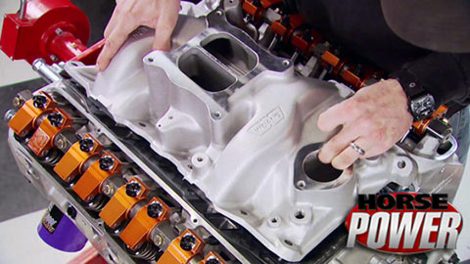HorsePower Builds
Want more content like this?
Join the PowerNation Email NewsletterParts Used In This Episode
Crower Cams & Equipment Co., Inc.
Hydraulic flat tappet camshaft, lifters, pushrods, assembly lube, timing set, ZDD Plus zinc additive.
Weiand
Intake Manifold, Stealth, Dual Plane, Aluminum, Natural, Square Bore, Chrysler, 318, 340, 360.
Custom Speed Parts Mfg.,Inc.
Harland Sharp needle bearing, single shaft mount, rockers for Small Block Chrysler.
Dynamic Test Systems / (DTS)
Dyno Cell and equipment
O'Reilly Auto Parts
Cel-Pro water outlet gasket
O'Reilly Auto Parts
Fel-Pro water pump gasket
O'Reilly Auto Parts
Fel-Pro rear main seal





























